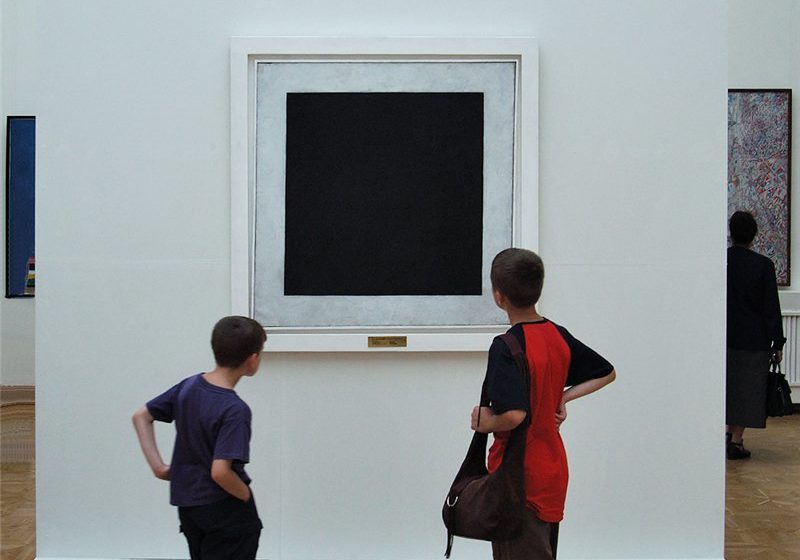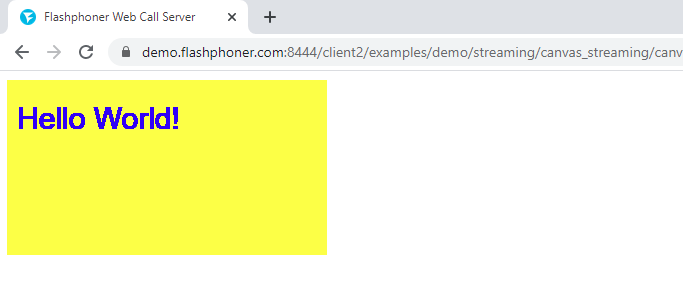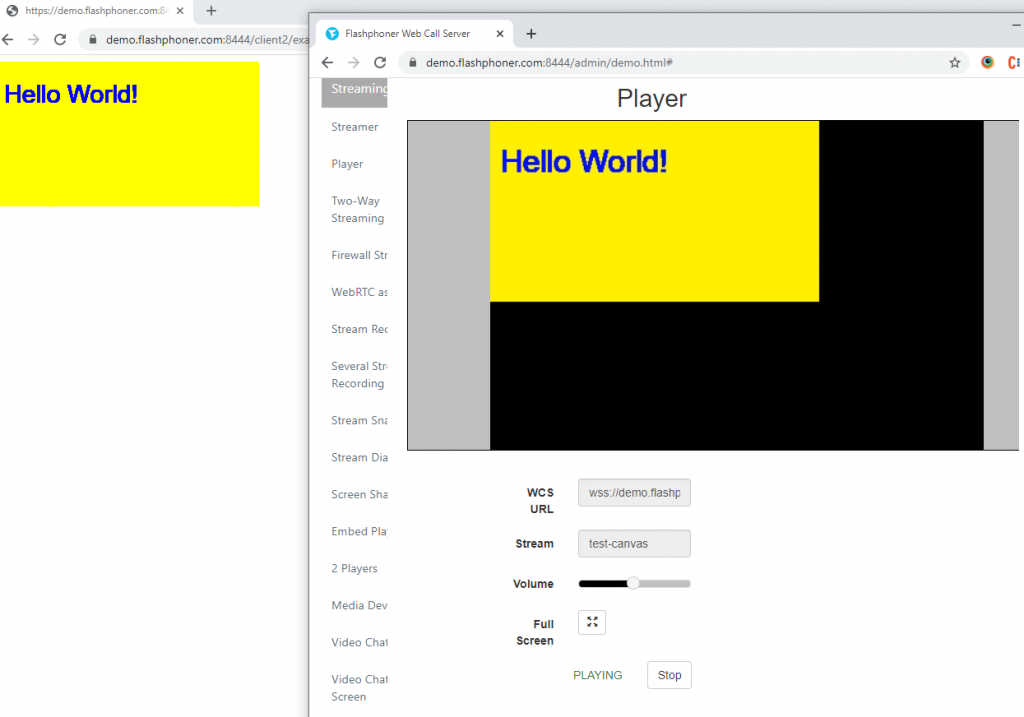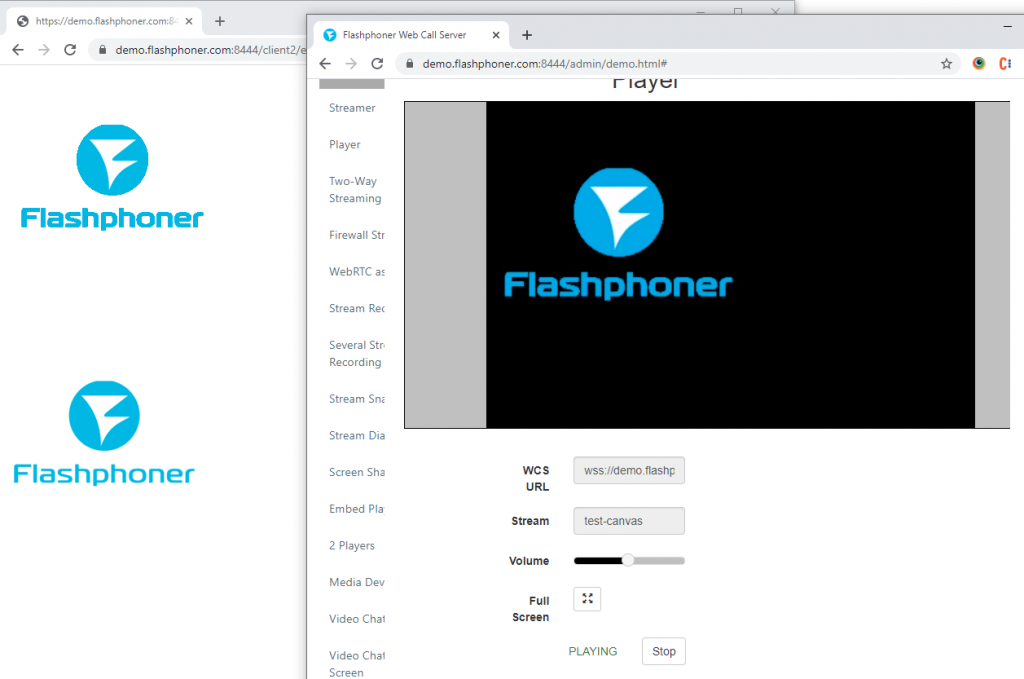And once again we come back to development of webinar hosting systems. Online workshops, web-conferences, online meetups, presentations and web guides — all that, in one form or another, is related to webinars.
Imagine: your customer is hosting a webinar that involves a slide presentation. There might be a need for them to manually draw something over the slides or make notes over them. As a developer, you need to provide the customer with a tool that can do that. This is where you can resort to Canvas streaming.
In this article we will take a look at what Canvas streaming is and the the pitfalls of working with it.
So, what is it?
Let’s see what Wikipedia has to say about it.
Canvas is an HTML5 element, dedicated to creating raster-based 2D images using scripts, usually based on JavaScript. It is generally used for rendering graphs and figures for articles.
The pros of using Canvas are as follows:
- it supports hardware acceleration;
- it is capable of manipulating any and each pixel separately.
The cons are as follows:
- it overloads the processor and RAM;
- its garbage collector is limited and provides no option to clear memory;
- it requires manual handling of object events;
- it doesn’t run well at high resolutions;
- it requires each element to be rendered separately.
The cons seem to outweigh the pros. However, despite that, Canvas does have a great advantage: it makes it possible to stream slide shows and draw over them during the webinar.
The finer points of Canvas streaming
Upon capturing a stream from a Canvas element the browser considers it black. That means a black text will merge with the background upon capture and the stream will look like a black screen. The same thing can happen when rendering a .png image with transparent background and black lines.

Also note, that the stream cannot consist of one frame. That means once you’ve put a static image on the Canvas, the stream won’t form because there is only one frame in it.
The solution is to render the static images cyclically.
For instance, the following function continually refreshes a Canvas-rendered image at 30 fps:
function loop(){
canvasContext.drawImage(img, 10, 10);
setTimeout(loop, 1000 / 30); // drawing at 30fps
}
Another point has to do with a browser security measure known as Same-origin Policy.
The image that is to be drawn on the Canvas must be hosted locally on the server or on a server within the same domain.
If the image to be rendered is downloaded from the Internet, the browser will signal exception.
This issue can be resolved using the Cross-Origin Resource Sharing (CORS) technology, but that solution is beyond the scope of this article.
More code!
As is tradition, here are the ready-made solutions, numbered one and two
- Text rendering via Canvas and WebRTC-flavored streaming
- Image rendering via Canvas and consequent WebRTC streaming
HTML-related parts are going to be virtually identical. Create a HTML file named canvas-streaming-min.html
In the page’s head, write down the access to scripts:
<script type="text/javascript" src="../../../../flashphoner.js"></script> <script type="text/javascript" src="canvas-streaming-min.js"></script>
In the body, deploy the HTML 5 Canvas element and div element for streaming. Set the Flashphoner API to initialize upon loading of the HTML page:
<body onload="init_page()"> <canvas width="480" height="320" id="canvas"></canvas> <div id="localDisplay" hidden></div> <br> </body>
For a simple example, let’s add an image to be rendered into the HTML file for the canvas. The image file is stored in the same server folder as the example files:
<img src="2307589.png" alt="logo" id="myimage" >
Here’s the complete code of an HTML page for a canvas with text:
<!DOCTYPE html> <html lang="en"> <head> <script type="text/javascript" src="../../../../flashphoner.js"></script> <script type="text/javascript" src="canvas-streaming-min.js"></script> </head> <body onload="init_page()"> <canvas width="480" height="320" id="canvas"></canvas> <div id="localDisplay" hidden></div> </body> </html>
For a canvas with images:
<!DOCTYPE html> <html lang="en"> <head> <script type="text/javascript" src="../../../../flashphoner.js"></script> <script type="text/javascript" src="canvas-streaming-min.js"></script> </head> <body onload="init_page()"> <canvas width="480" height="320" id="canvas"></canvas> <div id="localDisplay" hidden></div> <br> <img src="2307589.png" alt="logo" id="myimage" > </body> </html>
Now, let us move to JS scripts.
Rendering and streaming a canvas with text
Determine the constants and the global variables:
var SESSION_STATUS = Flashphoner.constants.SESSION_STATUS; var STREAM_STATUS = Flashphoner.constants.STREAM_STATUS; var session; var canvas; var localDisplay;
Write “Hello World” on the canvas. Draw a yellow rectangle sized 320px by 176px, font – Arial, text size – 30px, color – blue. Use the “loop()” function (mentioned above) to keep redrawing the canvas at 30 fps:
function createCanvas() {
var canvasContext = canvas.getContext ("2d");
canvasContext.font = "30px Arial";
canvasContext.fillStyle = "yellow";
canvasContext.fillRect(0,0,320,176);
canvasContext.strokeStyle = 'black';
canvasContext.fillStyle = "blue";
(function loop(){
canvasContext.fillText("Hello World!", 10, 50);
setTimeout(loop, 1000 / 30); // drawing at 30fps
})();
}
Connect to a WCS server via WebSocket and publish the stream of the canvas:
function createCanvas() {
var canvasContext = canvas.getContext ("2d");
canvasContext.font = "30px Arial";
canvasContext.fillStyle = "yellow";
canvasContext.fillRect(0,0,320,176);
canvasContext.strokeStyle = 'black';
canvasContext.fillStyle = "blue";
(function loop(){
canvasContext.fillText("Hello World!", 10, 50);
setTimeout(loop, 1000 / 30); // drawing at 30fps
})();
}
Here’s the full JS script code for rendering a canvas with text and capturing it for the stream:
var SESSION_STATUS = Flashphoner.constants.SESSION_STATUS;
var STREAM_STATUS = Flashphoner.constants.STREAM_STATUS;
var session;
var canvas;
var localDisplay;
//init api
function init_page() {
Flashphoner.init({});
localDisplay = document.getElementById("localDisplay");
canvas = document.getElementById("canvas");
createCanvas();
connect();
}
//create Canvas
function createCanvas() {
var canvasContext = canvas.getContext ("2d");
canvasContext.font = "30px Arial";
canvasContext.fillStyle = "yellow";
canvasContext.fillRect(0,0,320,176);
canvasContext.strokeStyle = 'black';
canvasContext.fillStyle = "blue";
(function loop(){
canvasContext.fillText("Hello World!", 10, 50);
setTimeout(loop, 1000 / 30); // drawing at 30fps
})();
}
//Connect to WCS server over webSockets
function connect() {
session = Flashphoner.createSession({
urlServer: "wss://demo.flashphoner.com:8443" //specify the address of your WCS
}).on(SESSION_STATUS.ESTABLISHED, function(session) {
publishStream(session);
});
}
//Capturing stream of Canvas element
function publishStream(session) {
publishStream = session.createStream({
name: "test-canvas",
display: localDisplay,
constraints: {
audio: false,
video: false,
customStream: canvas.captureStream(30)
}
});
publishStream.publish();
}
Testing the rendering and streaming for canvases with text
1. Open a created Webpage. In this example we are not using buttons, so the canvas is rendered immediately upon page initialization:

2. In another browser tab, open the demo-example “Player” on you WCS server. Specify the name of the stream that is capturing the canvas and start the stream. Here’s the image of the original canvas and how the stream should look in the player:

Rendering and streaming of canvases with images
Determine the constants and the global variables:
var SESSION_STATUS = Flashphoner.constants.SESSION_STATUS; var STREAM_STATUS = Flashphoner.constants.STREAM_STATUS; var session; var canvas; var localDisplay;
Upon receiving the image from the webpage, start cyclically rendering it on the canvas at 30 fps:
function createCanvas() {
var canvasContext = canvas.getContext ("2d");
var img = document.getElementById ("myimage");
(function loop(){
canvasContext.drawImage(img, 10, 10);
setTimeout(loop, 1000 / 30); // drawing at 30fps
})();
}
Connect to a WCS server via WebSocket and publish the stream of the canvas:
//Connect to WCS server over webSockets
function connect() {
session = Flashphoner.createSession({
urlServer: "wss://demo.flashphoner.com:8443" //specify the address of your WCS
}).on(SESSION_STATUS.ESTABLISHED, function(session) {
publishStream(session);
});
}
//Capturing stream of Canvas element
function publishStream(session) {
publishStream = session.createStream({
name: "test-canvas",
display: localDisplay,
constraints: {
audio: false,
video: false,
customStream: canvas.captureStream(30)
}
});
publishStream.publish();
}
Here’s a full JS script code for rendering a canvas with images and capturing it for the stream:
var SESSION_STATUS = Flashphoner.constants.SESSION_STATUS;
var STREAM_STATUS = Flashphoner.constants.STREAM_STATUS;
var session;
var canvas;
var localDisplay;
//init api
function init_page() {
Flashphoner.init({});
localDisplay = document.getElementById("localDisplay");
canvas = document.getElementById("canvas");
createCanvas();
connect();
}
//create Canvas
function createCanvas() {
var canvasContext = canvas.getContext ("2d");
var img = document.getElementById ("myimage");
(function loop(){
canvasContext.drawImage(img, 10, 10);
setTimeout(loop, 1000 / 30); // drawing at 30fps
})();
}
//Connect to WCS server over webSockets
function connect() {
session = Flashphoner.createSession({
urlServer: "wss://demo.flashphoner.com:8443" //specify the address of your WCS
}).on(SESSION_STATUS.ESTABLISHED, function(session) {
publishStream(session);
});
}
//Capturing stream of Canvas element
function publishStream(session) {
publishStream = session.createStream({
name: "test-canvas",
display: localDisplay,
constraints: {
audio: false,
video: false,
customStream: canvas.captureStream(30)
}
});
publishStream.publish();
}
Testing the rendering and streaming of canvases with images
1. Open the created webpage. The canvas will be rendered immediately upon page initialization. The image (bottom of the page) is displayed on the canvas (top of the page):

2. Open the demo-example “Player” on your WCS server. Specify the name of the stream that is capturing the canvas and start the stream. Here’s the image of the original canvas and how the stream should look in the player:

Conclusion
With this article we didn’t aim to break new ground. Our tech support has received questions on canvas streaming and so we undertook to provide you with some basic code that might help you use the canvas functionality in your project.
Good streaming to you!


